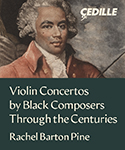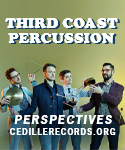From a technical standpoint, Daniil Trifonov can do anything he wants with Liszt’s music. In addition to possessing staggeringly accurate and flexible fingers, the 25-year-old pianist commands a wide palette of nuance and tone color, and is quite fond of milking inner voices and shaping fanciful phrases. These characteristics often lend an effortless tone to his interpretations of Liszt’s Transcendental Etudes.
Trifonov rips through the opening Preludio with galvanic nonchalance, while the pianist’s multi-layered touch justifies Paysage’s deliberate pace and tempo variations. Mazeppa can often sound clattery and upholstered, yet Trifonov’s assured bravura conveys welcome lightness and transparency. At times, however, Trifonov’s impressive facility gets the better of him.
For example, the pianist has no problem with Feux Follet’s tricky double notes, but his skittish phrasing lacks poise compared to the brisker elegance of Richter or Nojima. In the seventh etude “Eroica” you’ll notice that Trifonov glibly clips the accompanying chords underneath the main theme, whereas Laszlo Simon imparts a different character to each chord. Furthermore, Trifonov’s antsy detailing in No. 10 dissipates its harmonic structure and long melodic arcs that are so eloquently projected by Kirill Gerstein, whose concurrent version of the Etudes proves a less pianistically interesting yet more musically compelling competitor. Yet despite more than a few instances of effects-mongering in Wild Jagd, I am struck by Trifonov’s gorgeous floating of the second theme over the bar lines, with minimum help from the sustain pedal.
Although Trifonov sails through the Paganini Etudes with brio and aplomb (especially in La Campanella’s darting leaps), comparisons with Marc-André Hamelin’s recordings constantly attest to the older pianist’s seasoned musicianship. To cite one instance, Hamelin’s care with articulation gives the “hunting horn” motive in La Chasse much more character and lilt. The sixth etude Theme and Variations often find Trifonov working too hard to make expressive points that Hamelin effortlessly tosses off. In the second variation, for example, Hamelin makes more of a textural distinction between the left hand theme and the right hand decorative triplets, while Trifonov presents everything on the same level.
However, Trifonov’s artistry takes more focused wing in the concert etudes. Most younger pianists today play La Leggierezza in an introspective and boring fashion, while Trifonov’s feathery passagework and curvaceous phrasing often evoke the great old Paderewski and Moiseiwitsch recordings. And Trifonov’s canny pacing and handling of dynamics make the discursive and overly long Il Lamento sound like a veritable masterpiece. In sum, there is no disputing Trifonov’s prodigious keyboard talent and inborn affinity for Liszt, even if he does not quite live up to this release’s “transcendental” claim.
































